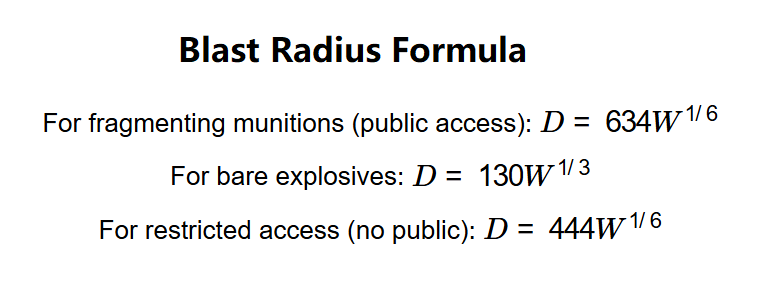 Home
Home
 Back
Back

Definition: This calculator computes the blast radius (\( D \)) of an explosion using the Hopkinson-Cranz scaling law, based on the explosive yield (\( W \)) in TNT equivalent and the scenario (fragmenting munitions, bare explosives, or restricted access).
Purpose: It is used in safety analysis, military planning, and engineering to estimate the safe distance from an explosion to protect people and structures.
The calculator uses the following Hopkinson-Cranz scaling equations:
Where:
Steps:
Calculating the blast radius is crucial for:
Example 1 (Fragmenting Munitions, Public Access): Calculate the blast radius for 1 tonne of TNT:
Example 2 (Bare Explosives): Calculate the blast radius for 1 lb of TNT:
Q: What is the Hopkinson-Cranz scaling law?
A: It is an empirical method to estimate the blast radius of an explosion based on the explosive yield, using different scaling factors for various scenarios.
Q: Why are there different formulas for different scenarios?
A: The scenarios account for different blast effects: fragmenting munitions produce shrapnel, requiring a larger safety distance; bare explosives focus on the shock wave; restricted access reduces the safety margin.
Q: Does this calculator account for environmental factors?
A: No, this calculator uses simplified empirical formulas and assumes ideal conditions (e.g., no terrain effects, air density variations, or wind). Real-world blast radii may vary.